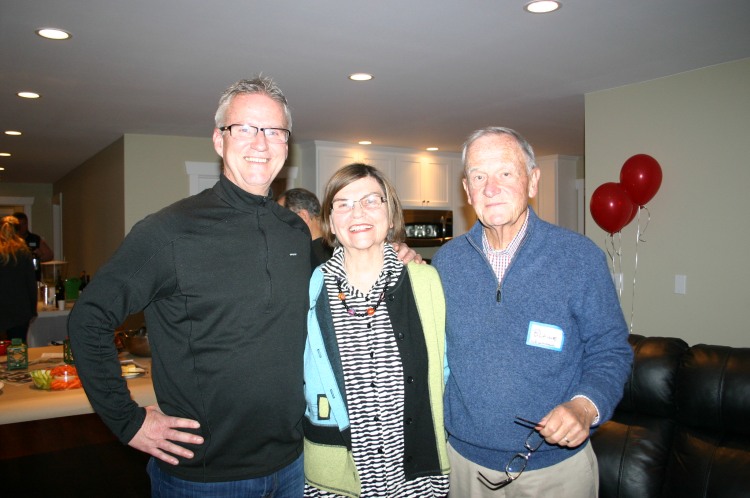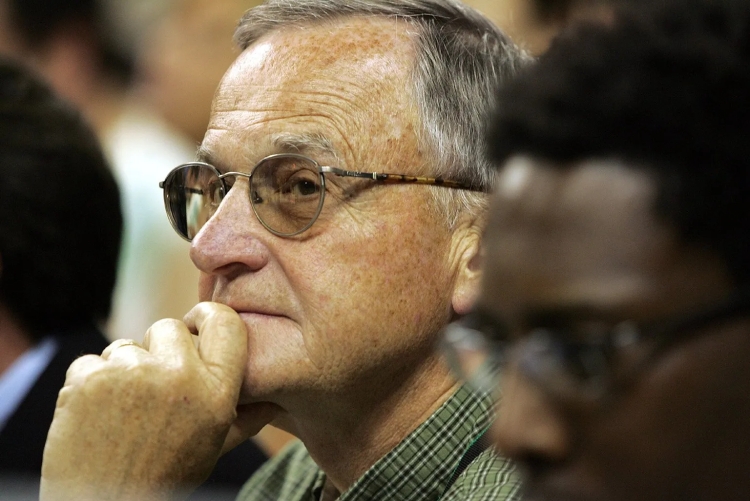
Any baseball player will tell you they remember the day they were called up to the big leagues. I certainly remember a similar life-changing moment on a journalism scale, when in November 1984 I learned I was going from a small-town newspaper in Roseburg, Oregon to The Seattle Times.
I probably skipped at least one stop – like a medium-sized paper – in this move. To put this in sports perspective, this is akin to making the jump from the Class A, minor-league Everett AquaSox to the Seattle Mariners. I was lucky.
My pleasant surprise was only surpassed by the stunned looks on the faces of my colleagues at The News-Review as the announcement was made at a hastily-called staff meeting.
N-R Assistant Sports Editor Bill Reader was in that meeting that day, and he would recall years later that I was “modest and self-effacing, making a joke about delivering papers, but this made no sense to us. Who do you have to know at The Times to get a job there? Blaine Newnham, as it turned out.”
Bill would join me at The Times 15 years later, and we revisited that meeting long ago at our former newspaper at a coffee gathering of current and former Seattle Times sports folks a few days after Blaine passed away June 16 at the age of 82.
I’m not sure where the notion came from that I had some inside connection with Blaine at The Times. Truth is, I had never met Blaine until the day I interviewed in Seattle, which I recall was the day after Ronald Reagan was re-elected to a second term as president of the United States..
There was familiarity, but no prior relationship. I had only observed Blaine from a distance in the press box at an Oregon football or basketball game. He was the sports editor and columnist at the Eugene Register-Guard for 11 years prior to his move to Seattle in 1982. The familiarity apparently went both ways. I would learn later Blaine knew of my work as a sports and news page designer at the southern Oregon newspaper I worked at some 70 miles down I-5.
What I can say is the initial bond Blaine and I shared then, and continued to share in our 20 years together at The Times, was our passion for “story presentation,” a term I wouldn’t have used in the 1980s. That’s because the concept didn’t exist. The importance of story presentation (newspaper layout), graphics and color photos – long relegated to the back seat of the bus driven by emphasis on story form – was just gathering momentum when I was hired as a sports reporter in Roseburg in the fall of 1979.
I was blown away by the Register-Guard sports section, which under Blaine’s leadership in 1976 was named the nation’s best by the Associated Press Sports Editors. I doubt Blaine ever designed a page in his life. But he knew what good design looked like.
The two papers in Seattle at the time – The Times and Post-Intelligencer – were still in the dark ages of newspaper design. That meant multiple stories on the cover, small black-and-white photos and cluttered layout. The R-G, by contrast, covered Oregon football with a flare I had never seen. That meant a clean, impactful display of big, color photos and bold headlines on a cover with a minimum story count, and multiples pages inside with more large photos and game sidebars. The Sunday paper also had separate roundups of major conference football games around the country, something no paper outside of the state of Texas was doing at the time. I bet Blaine’s fingerprints were all over that.

The newspaper in arguably the “Track Capital of the World” also covered track and field like no other. I’m talking dual meets between Oregon and Pac-10 foes that dominated the cover and jumped to inside spreads. The day before the meets, the paper would print the personal records of contestants in each event, so you could reasonably predict which team would win.
Dave Kayfes, his former Register-Guard and college buddy at Cal who still. lives in Eugene, said in The Times: “He’s still revered down here in the track world. He’ll always be a legend down here. He put together coverage that hasn’t been duplicated.”
The R-G was also one of the first papers on the west coast to provide expansive coverage of college football and basketball recruiting. Blaine was always a big-picture, visionary kind of guy.
While he was making his mark in Eugene, I was doing some innovative stuff in little ole Roseburg. I introduced charts, graphics, photo treatment and type treatment to the readers in southern Oregon. While I started there as a sportswriter, I eventually found myself gravitating to layout. It came easier to me. I started a weekly outdoor, recreation page called “Venture.” I wrote stories on a variety of topics, including hiking, fishing, hunting, motocross, cross-country skiing and Christmas-tree cutting. But what carried the page was the layout using the aforementioned, self-taught skills. The page won awards.
It was a few of those Venture page clippings that caught the eye of Blaine, Times associate editor and columnist, and then-sports editor Del Danielson. I interviewed with a number of higher-ups that day in 1984, but I sensed an instant connection with Blaine. I felt like we shared the same vision and values of what a sports section should be. Although Del would have had the final say on my hire, I suspect Blaine had some sway.
I would be the first full-time sports designer to be hired at The Times. In the few years leading up to that, sports layout duties were shared by the copy desk and sports photographer Harley Soltes, a former Eugene Register-Guard photog who had followed Blaine to Seattle.
Blaine and I would forge a strong working relationship and friendship over the next two decades until his retirement in 2005. He entertained my family at his homes on Bainbridge Island and Indianola. We entertained Blaine and Joanna at our home in Skagit County during a Tulip Festival. He was at my 60th birthday party while I was still working and he had retired.
Thirteen years older than I, he was wise, smart, thoughtful and a good mentor for me in my early years at the paper. He inspired me, just talking to him. He affirmed and encouraged me when I did good work. He got in my face when I was out of line. I took the good and the bad to heart.
Between his stints in Eugene and Seattle, I believe he deserves to be on the Mount Rushmore of sports columnists in the Pacific Northwest. He wrote with authority on college sports. I believe his strength was his coverage of games. He had a knack for breaking down a game and explaining in layman’s terms why the local team won or lost. This was especially true with his coverage of Husky football and basketball (college sports was his first love). If I wanted to know how a Husky football game went down, I read Blaine first. I suspect I wasn’t alone.
I would also say he was a great interviewer. He was a nice, decent man, and approachable. He had a disarming way of making coaches and players feel at ease.
I don’t think I’ve worked with anyone I respected more than Blaine. I would say he was an introvert at heart. He didn’t talk a lot at meetings. But when he spoke, people listened. I sat with him at many weekly sports planning meetings over the years. No one brought more ideas and energy to the table than Blaine. He had great instincts for what our readers wanted to read.
His legacy in journalism, and his impact on my life, will not be lost.
What also is not lost on me is he got me the heck out of Roseburg, Oregon.